In September 1913, a wave of mourning swept over New York City following the death of its mayor, William Jay Gaynor. The mayor had died suddenly at sea aboard the ocean liner RMS Baltic while traveling to Europe for a much-needed vacation. His death came three years after a disgruntled city employee shot him in the throat, an assassination attempt from which he never fully recovered. When the ship carrying his body returned to New York, the city began a solemn, multi-day farewell to its leader.
After the mayor’s casket was brought ashore, it was taken to New York City Hall and placed in the historic Governor’s Room to lie in state. The coffin was draped in the official blue and white flag of the city. An honor guard composed of policemen and firemen stood a silent, constant watch. For two days, tens of thousands of New Yorkers from all walks of life formed long, quiet lines that snaked through City Hall Park, waiting for their turn to file past the bier and pay their respects to the late mayor.
On the morning of the funeral, businesses throughout the five boroughs were closed. Flags on all public buildings and many private ones were lowered to half-staff. The day began with a massive and silent procession through the streets of Lower Manhattan. A platoon of mounted police led the way, their horses’ hooves the only loud sound on the quiet streets. The hearse was followed by city officials, judges, and delegations from various city departments. Thousands of citizens lined the route, standing in respectful silence as the procession passed.
Read more
The private funeral service was held at Trinity Church, the historic Episcopal church at the head of Wall Street on Broadway. The service was attended by Gaynor’s family, his close associates, and the most powerful figures in city and state politics. The pews were filled with dignitaries who had come to mark the passing of the city’s chief executive.
Following the service at Trinity Church, the hearse began its final journey. It proceeded slowly out of Manhattan and across the Brooklyn Bridge, the great span that connected the two boroughs where Gaynor had built his political career, first as a judge in Brooklyn and then as mayor of the greater city. The final destination was Green-Wood Cemetery in Brooklyn. There, away from the large crowds, a small, private graveside service was held for family and close friends as the mayor was laid to rest.


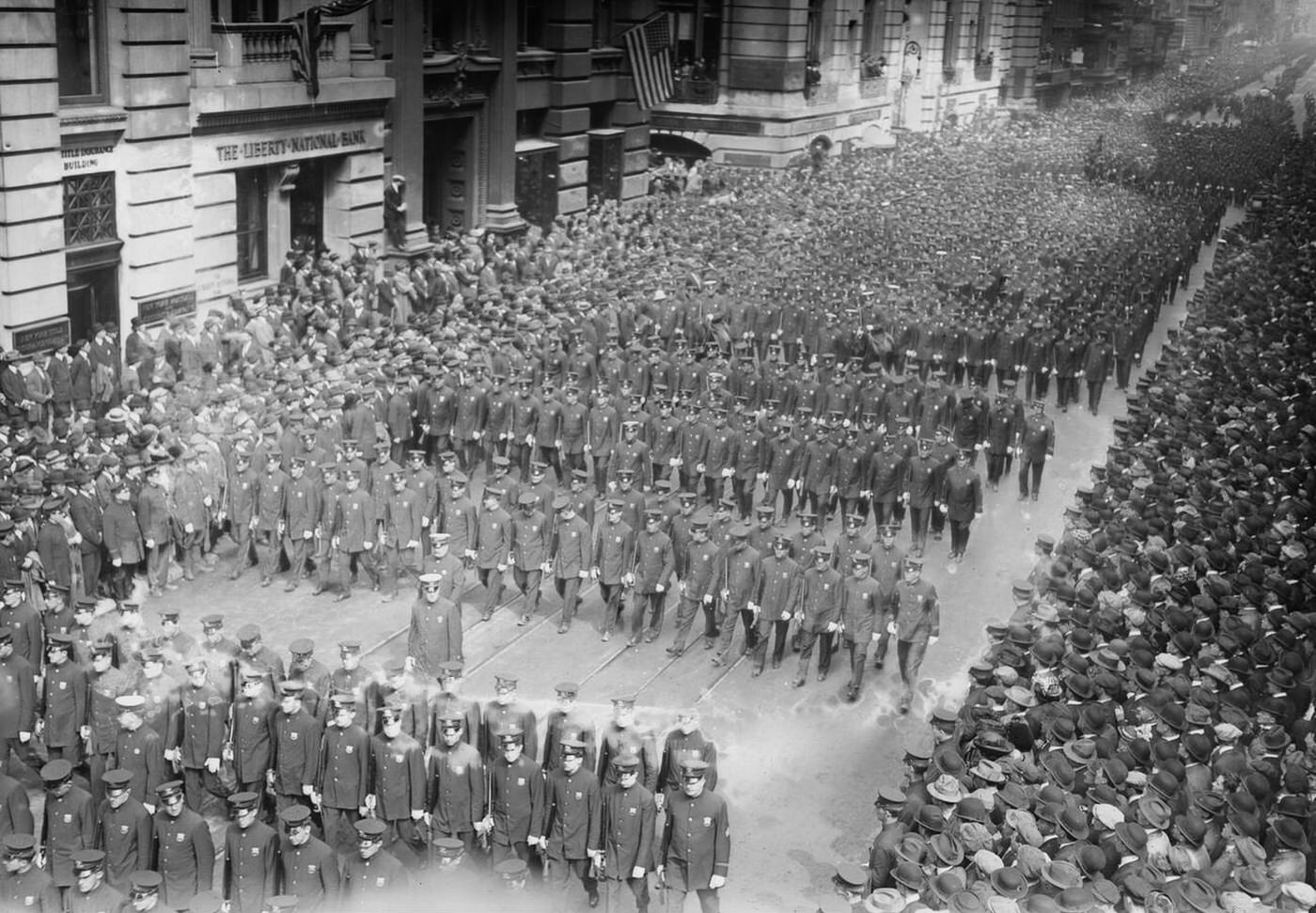
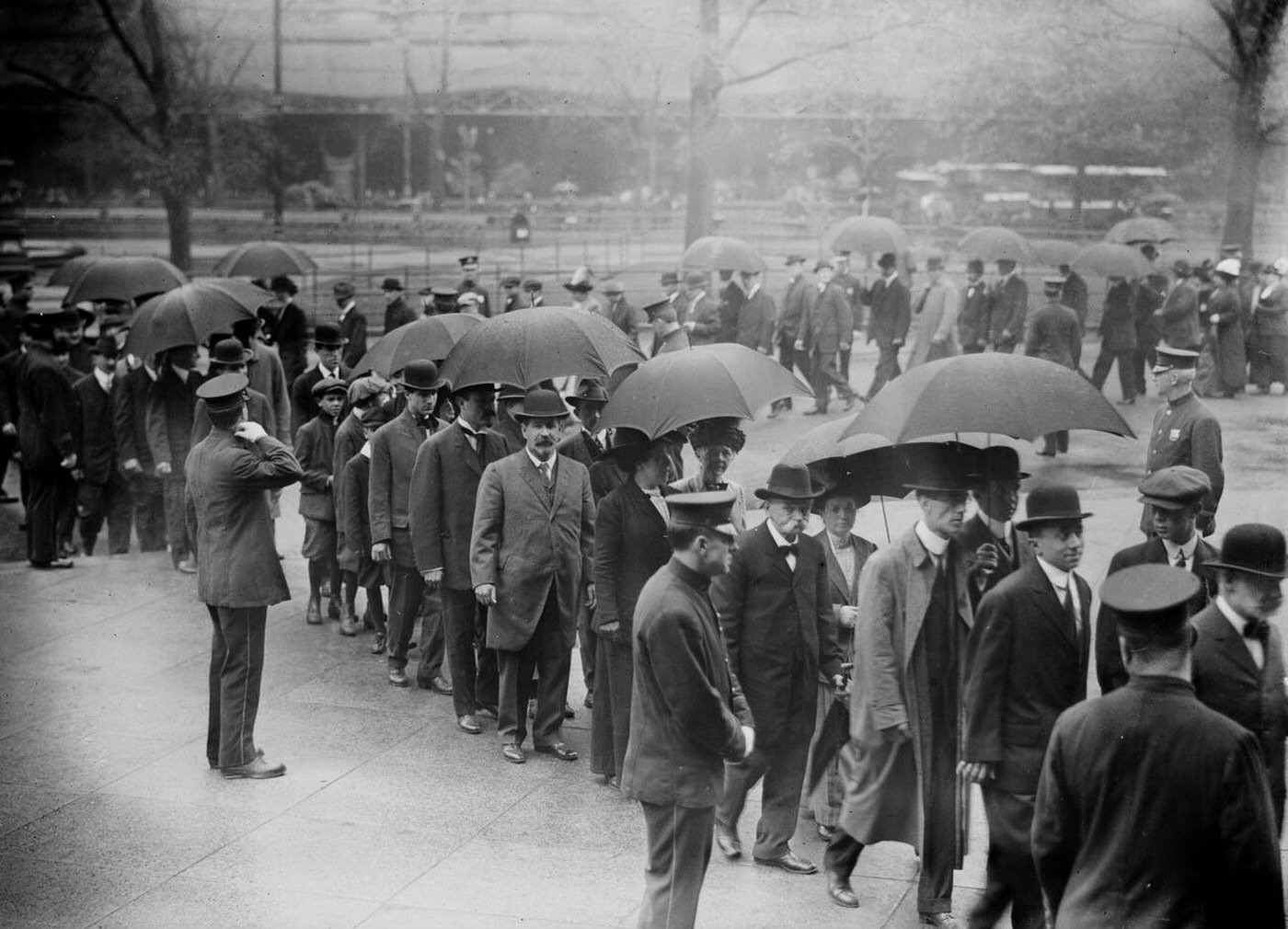
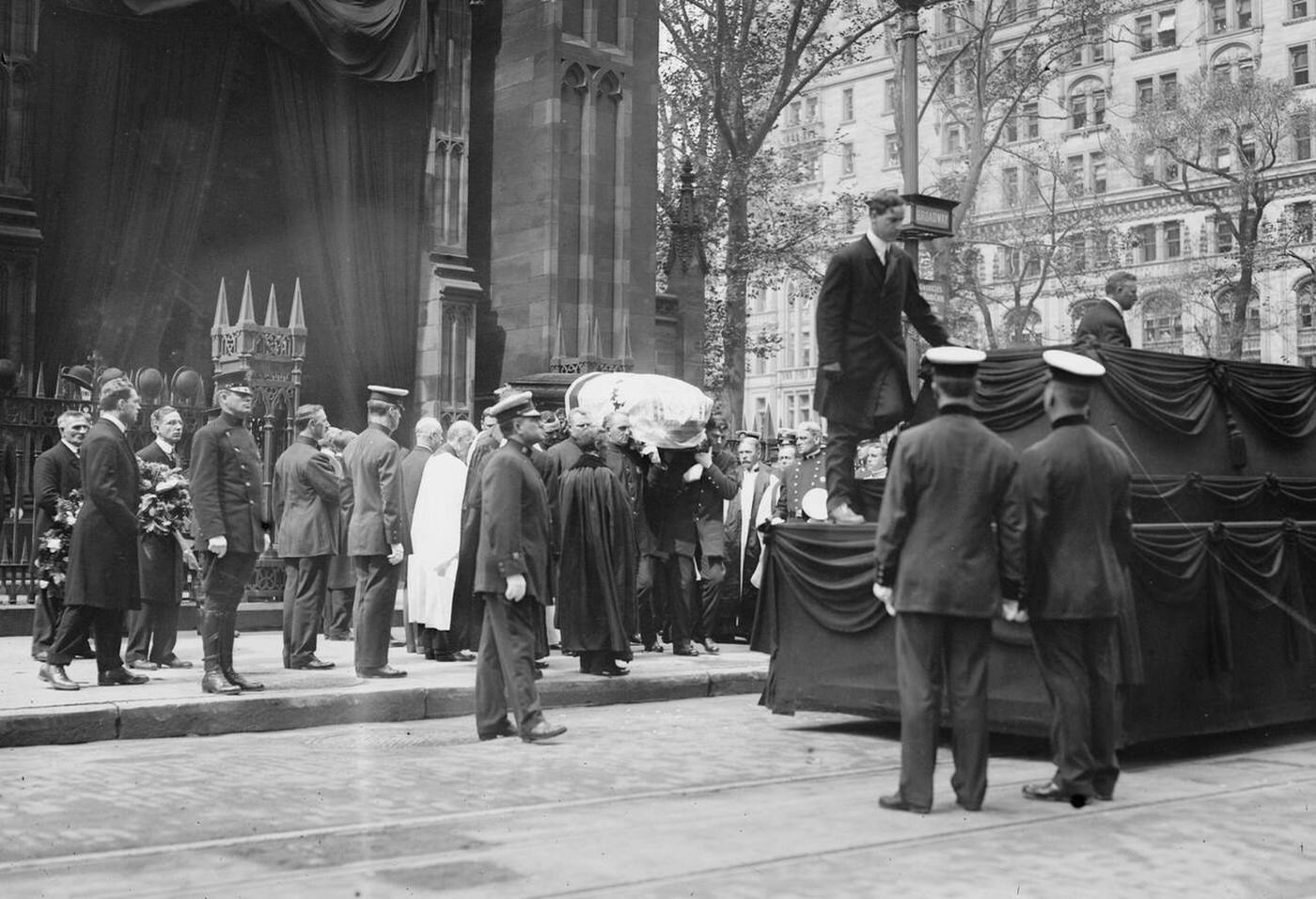
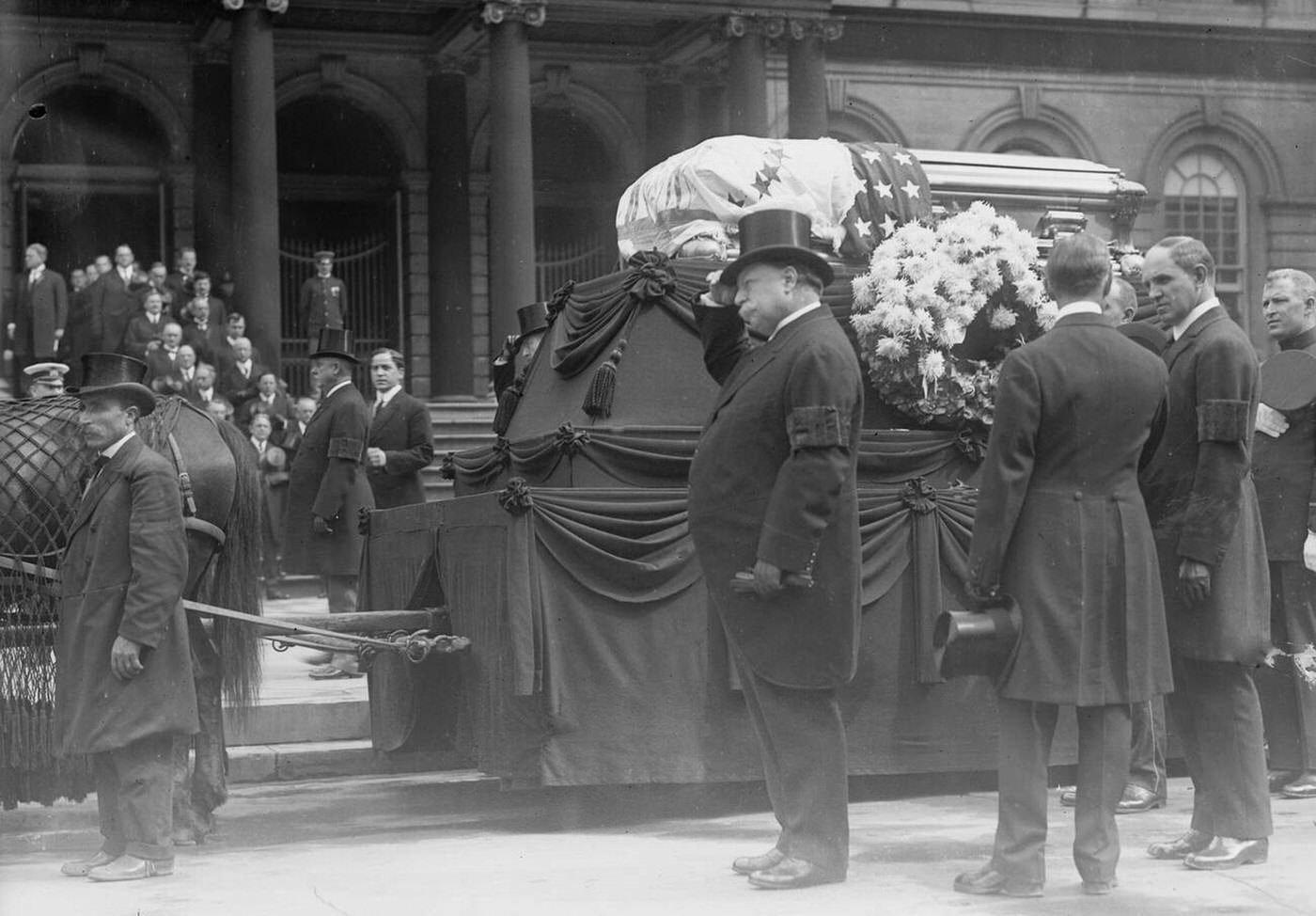
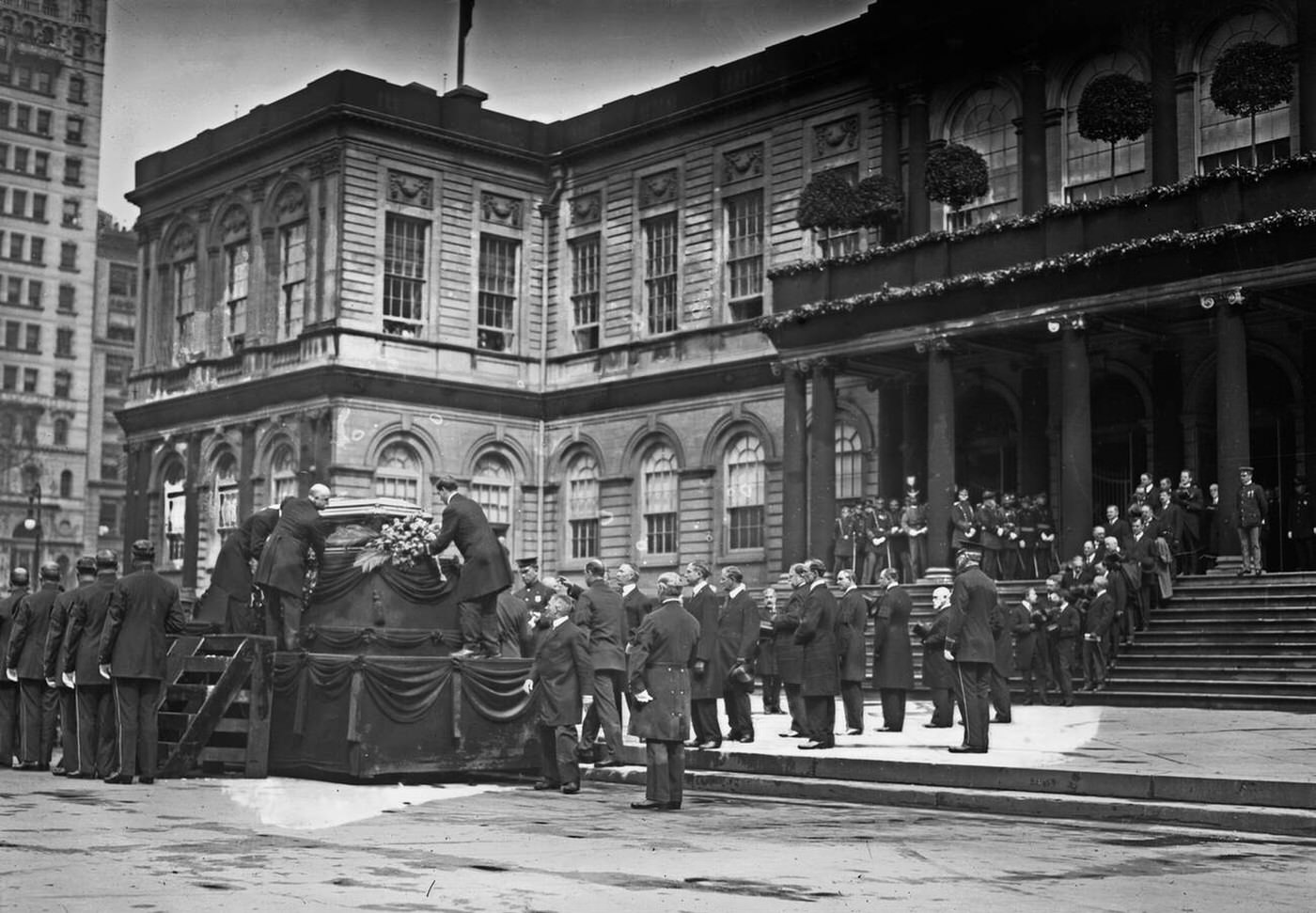
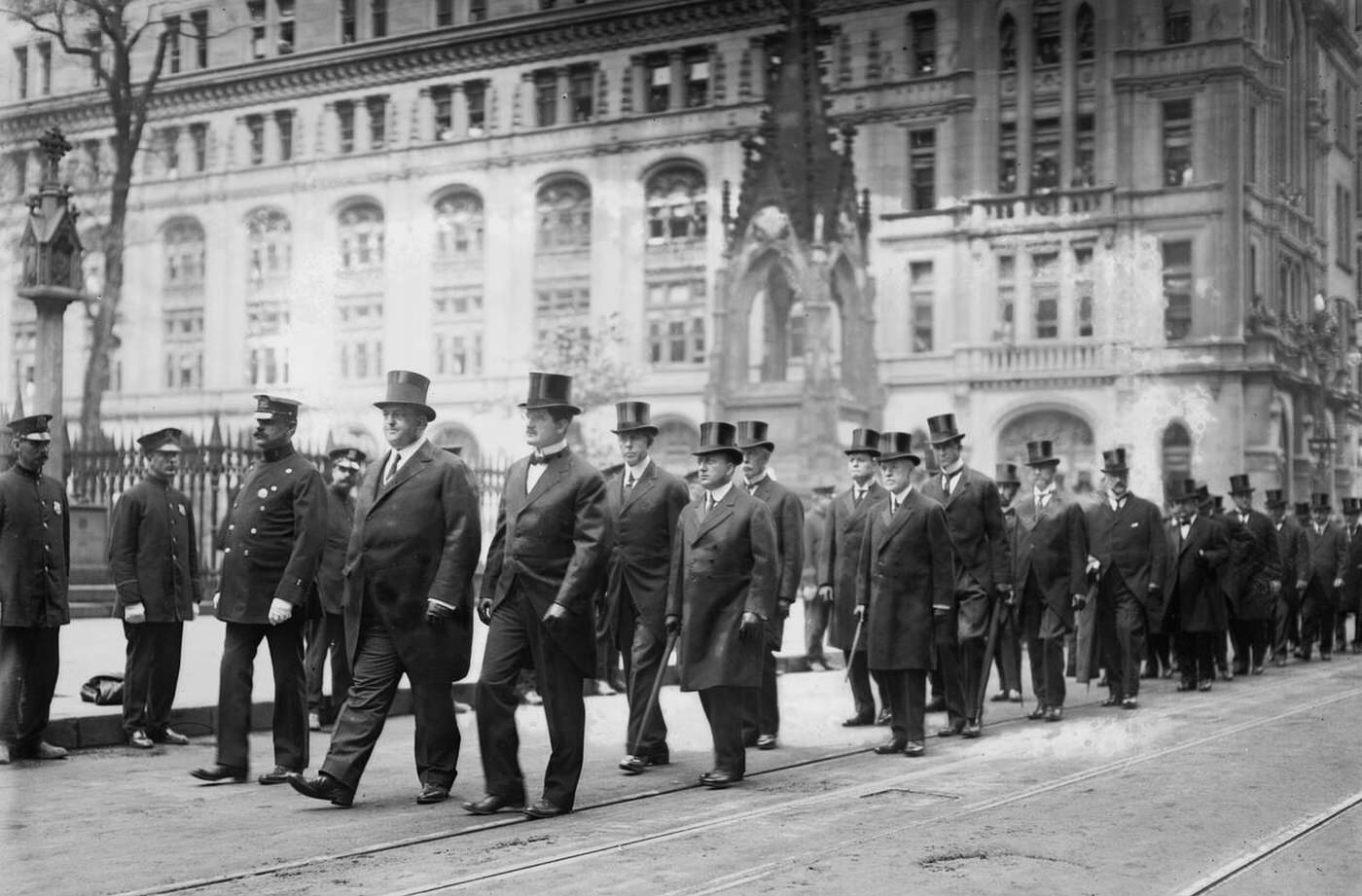
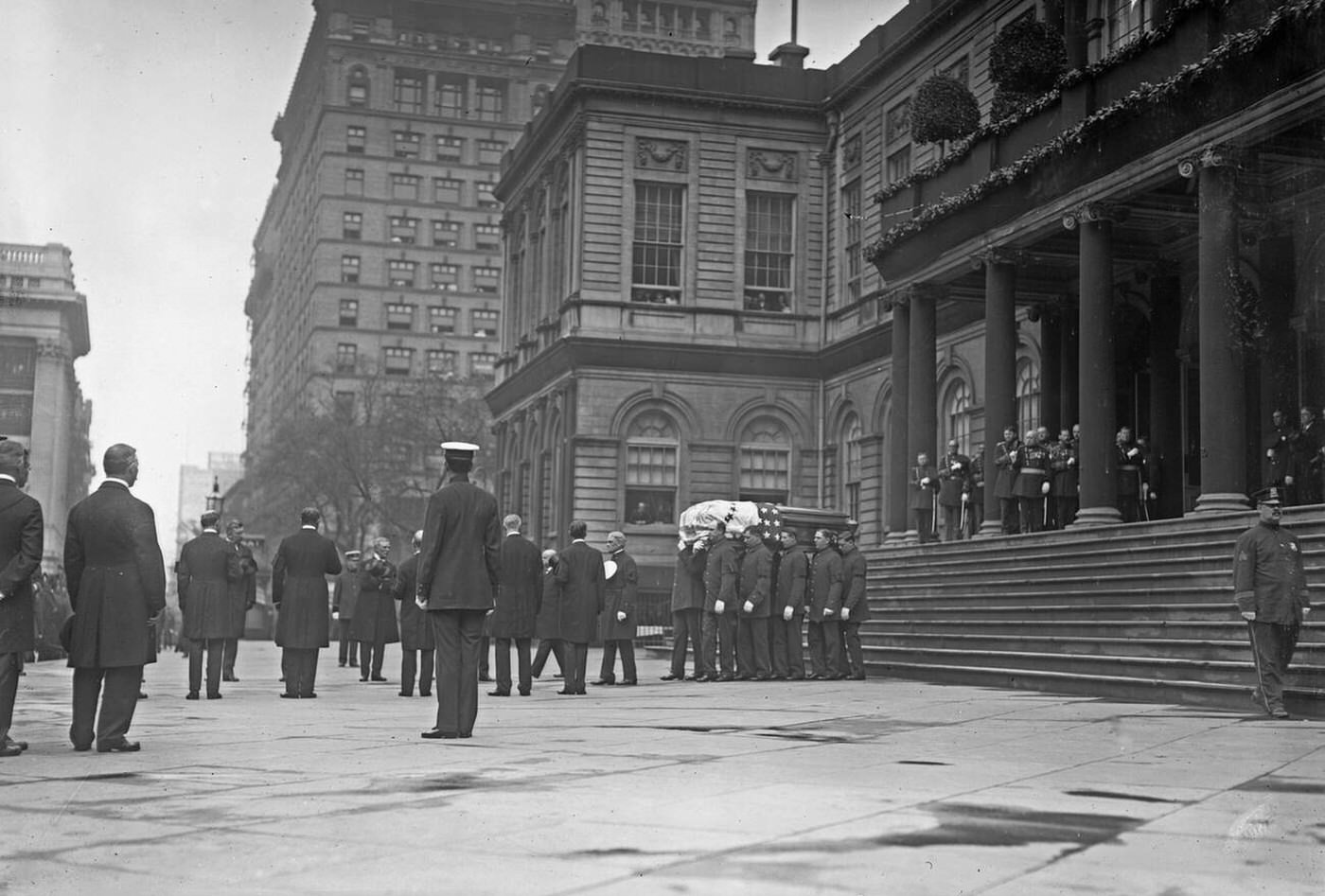
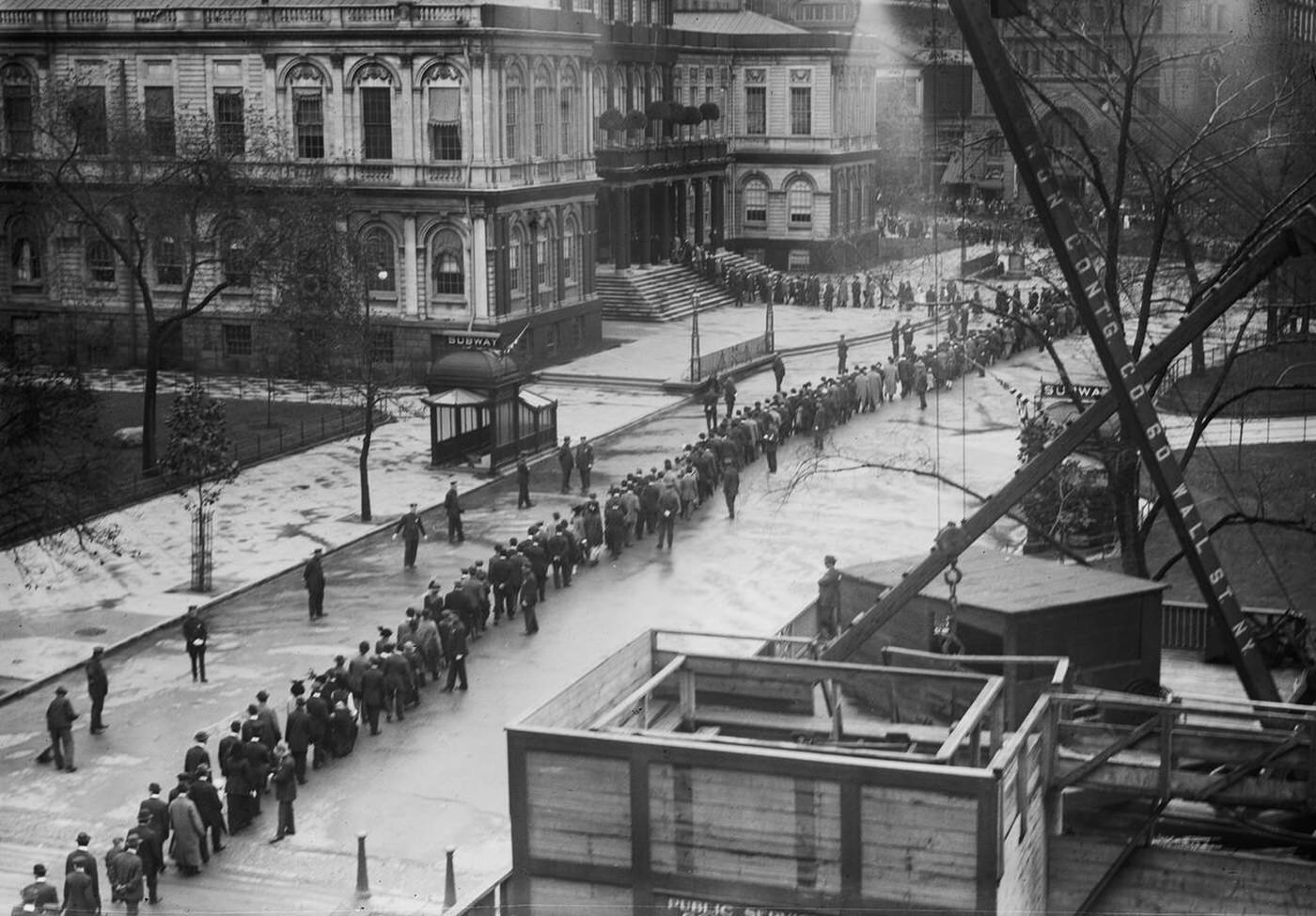
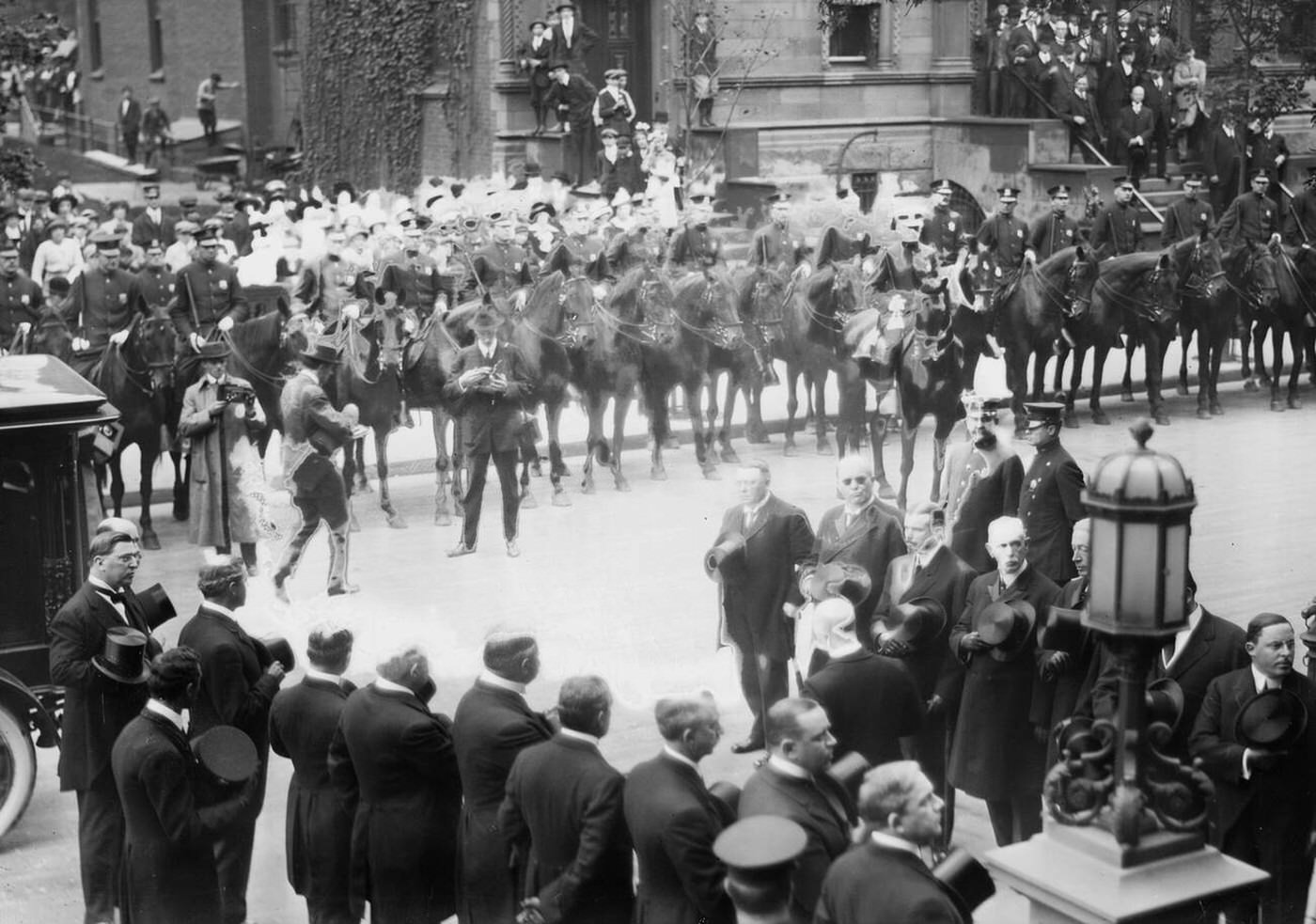
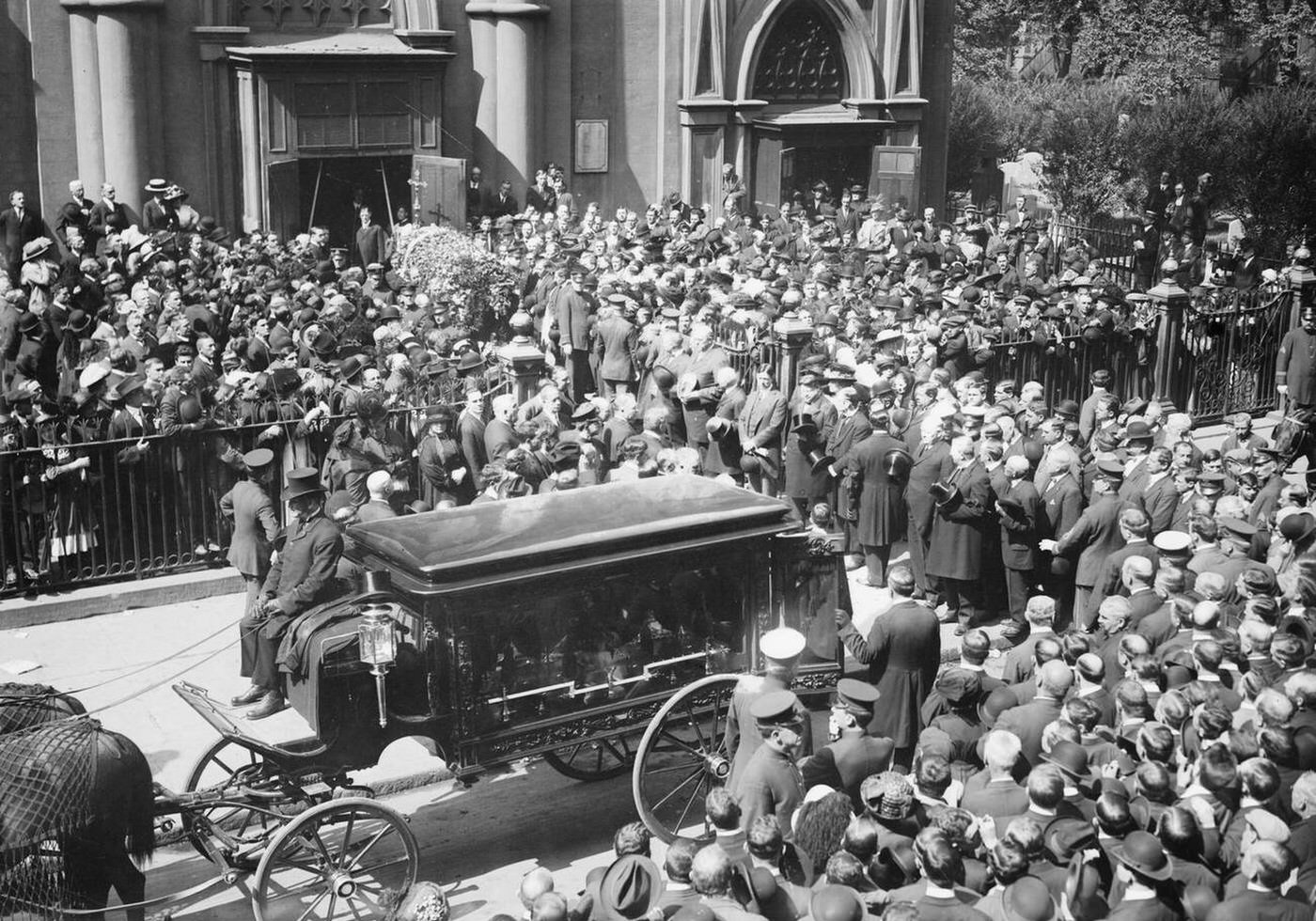
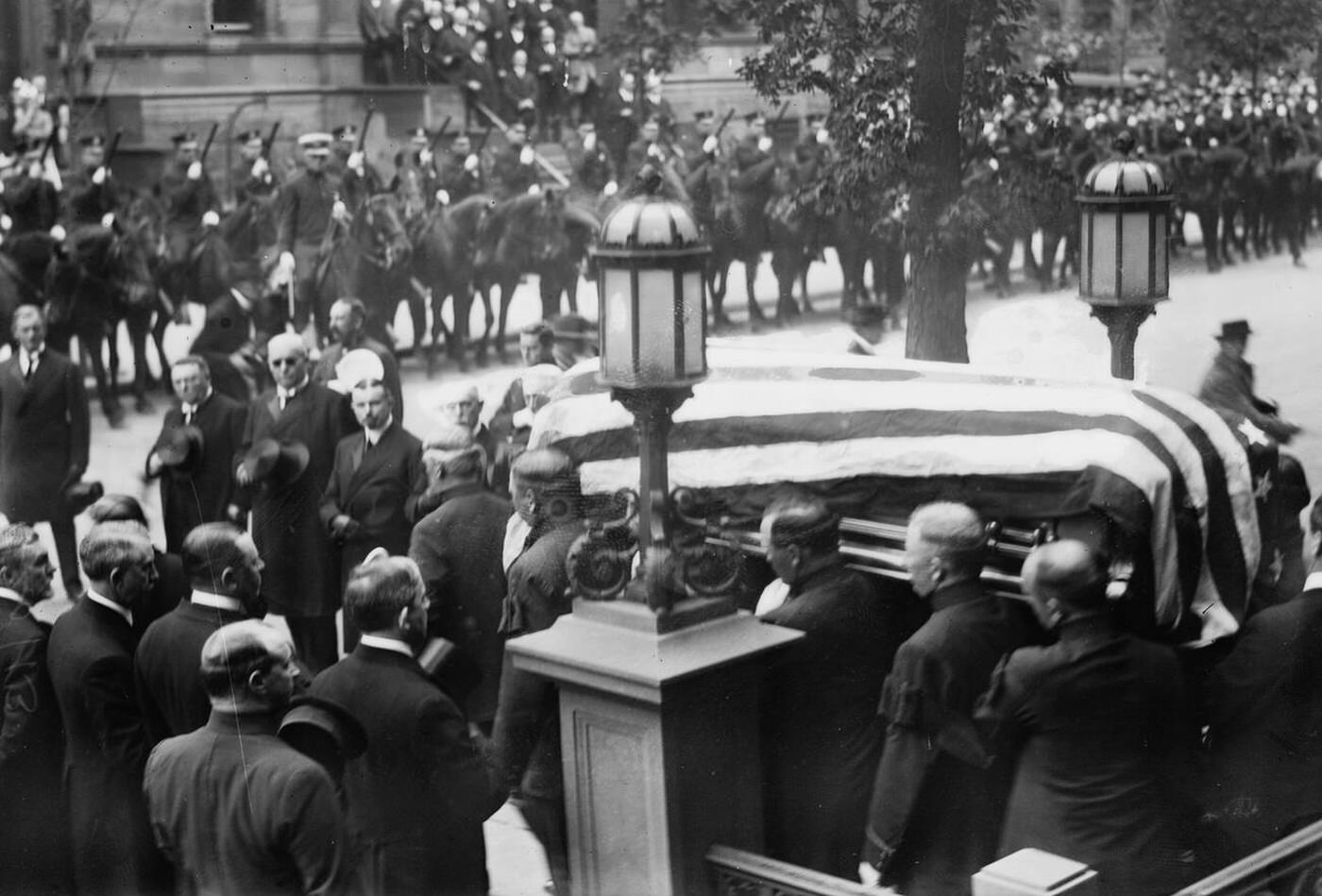
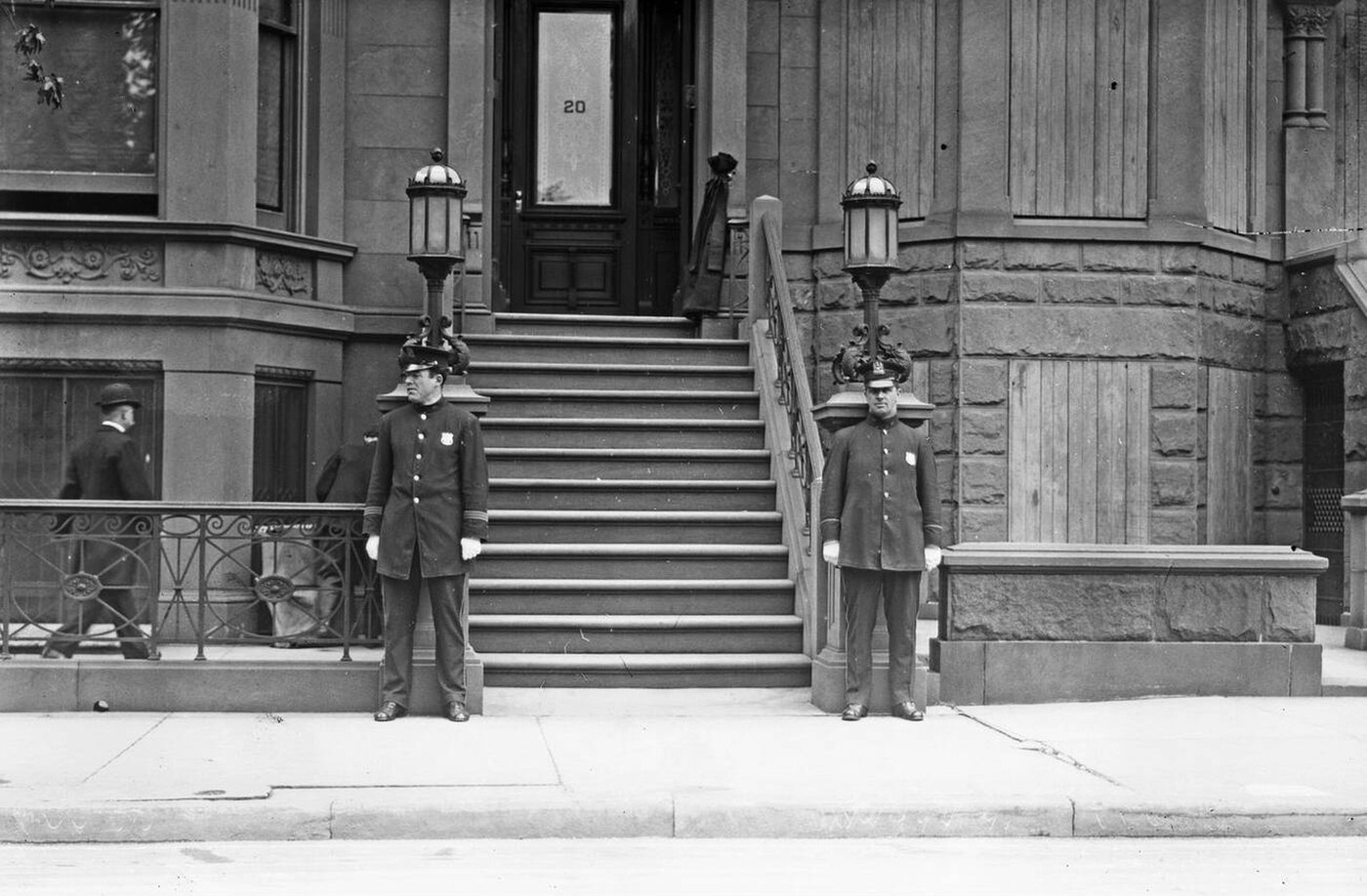
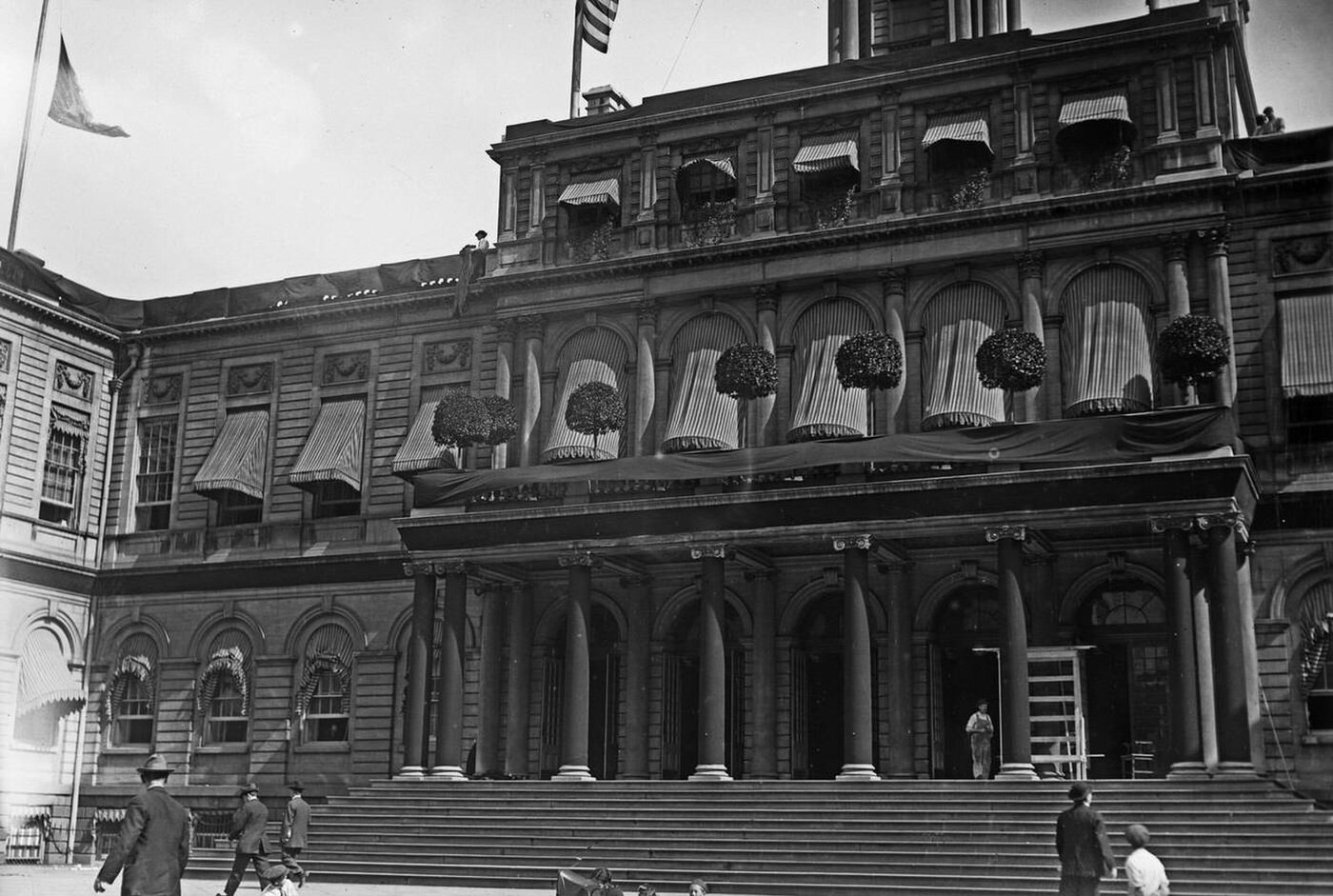
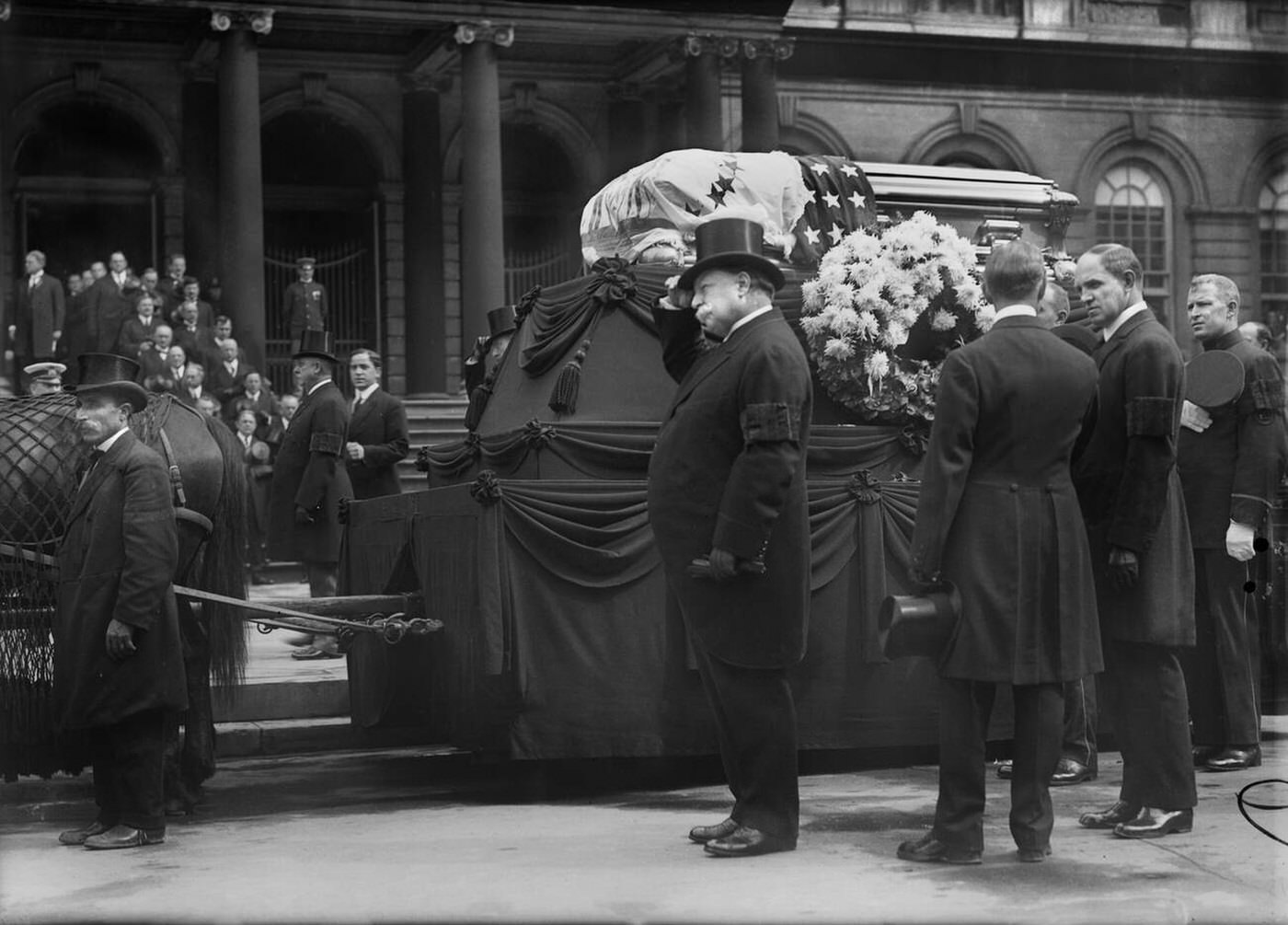

GIPHY App Key not set. Please check settings